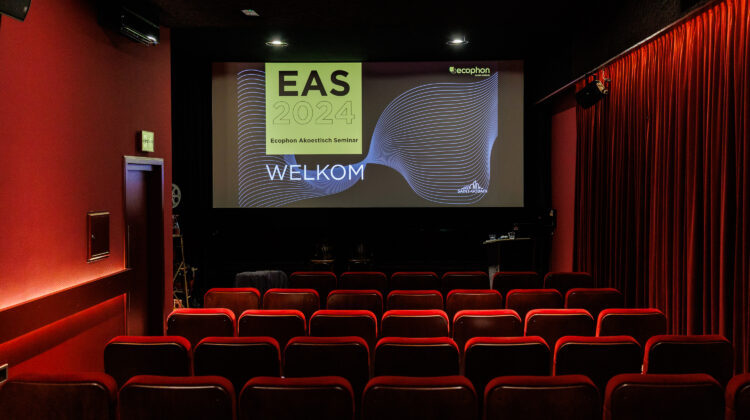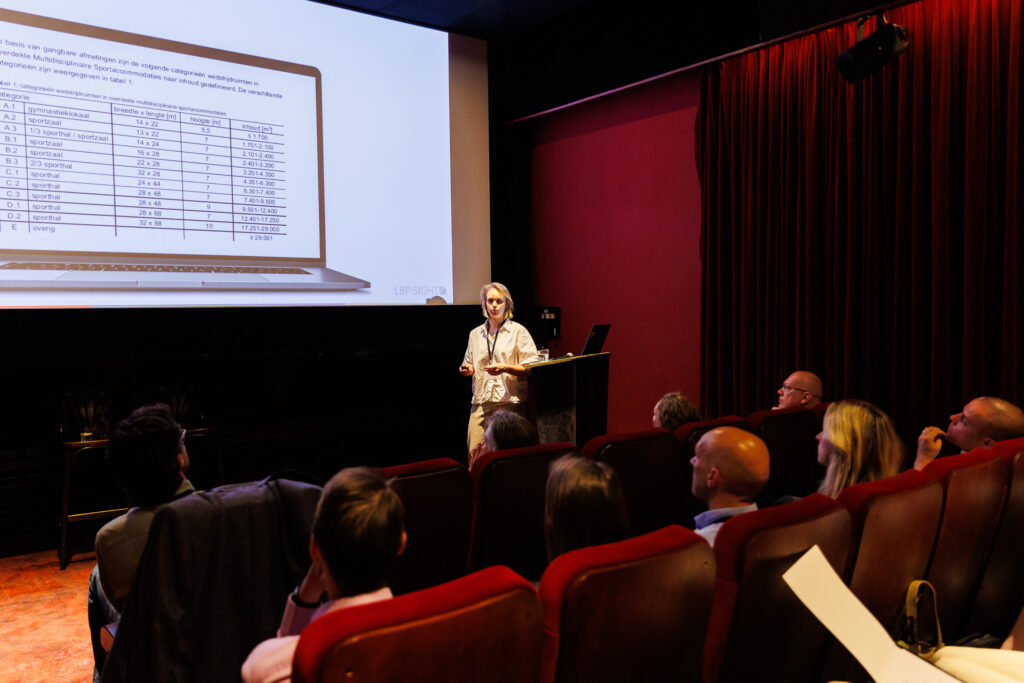
Insights from Jeroen Vugts and Pien Schravesande at EAS 2024
Swimming pools, with their lively and dynamic environments, present unique acoustic challenges that are often overlooked. At the recent Ecophon Acoustic Seminar (EAS) in the Netherlands, ir. Jeroen Vugts and Pien Schravesande of LBP Sight presented an insightful discussion on the critical role of acoustics in swimming pools. Their presentation highlighted the need for tailored acoustic solutions to manage noise levels and improve the overall experience for both users and staff.
Acoustics in swimming pools
Swimming pools are inherently noisy from a variety of sources. Instructors and children generate significant noise during lessons and recreational activities, while amplified music during events such as disco swimming adds to the overall din. In addition, the constant sound of overflow gutters, air-handling systems, and play features such as water slides contribute to a cacophony that can be overwhelming. The architectural features of pools, including large glass facades, high ceilings, and hard, cleanable surfaces, exacerbate the problem by creating significant reverberation and elevated sound levels.
Reverberation time
One of the primary acoustical concerns in swimming pools is reverberation. The hard surfaces prevalent in these environments cause sound waves to reflect, creating a noisy and chaotic atmosphere. This not only makes communication difficult, but can also be uncomfortable and potentially harmful to hearing. Vugts and Schravesande emphasized the importance of using appropriate sound-absorbing materials to mitigate this problem. They recommended the use of indicative calculations using Sabine’s formula and manual methods according to NEN-EN 12354-6 to estimate reverberation times,. Complemented by the creation of detailed acoustic models. These models help predict and visualize reflections, allowing for precise acoustic treatments.
Sound pressure level
Managing the overall sound level in a pool is equally important. Vugts and Schravesande presented data showing that sound levels during swimming lessons can range from 70 to 76 dB. While competitive swimming and water polo can reach up to 80 dB, often accompanied by loud music. To control these sound levels, they suggested improving sound absorption by applying materials to the entire ceiling. And a significant portion of the higher walls, aiming for an average absorption coefficient of at least 0.25.
They also recommended the use of walls that diffuse sound or are angled to prevent flutter echoes. They suggested rethinking acoustic requirements, suggesting that rather than focusing solely on reverberation time, it might be more effective to set requirements based on the amount of sound absorption relative to loudness.
Acoustic complexity in swimming pools

Vugts and Schravesande’s conclusions underscore the complexity of achieving good acoustics in swimming pools. They emphasized that comprehensive acoustic treatments are essential for effective sound level management. Consideration of different noise sources and their interactions is essential in designing effective acoustic solutions. Given the high noise levels even in acoustically treated pools, hearing protection may be required for staff and users.
Their presentation highlighted the need for a detailed and informed approach to acoustic design in swimming pools. By addressing the unique challenges of these environments, it is possible to improve acoustic comfort and the overall experience for all involved.
For more in-depth insights and the full presentation, interested parties are encouraged to contact LBP Sight or visit their social media platforms. This presentation by Jeroen Vugts and Pien Schravesande serves as a valuable reminder of the critical role acoustics play in creating pleasant and functional swimming environments.
Thank you for contributing to the Ecophon Acoustic Seminar 2024!

